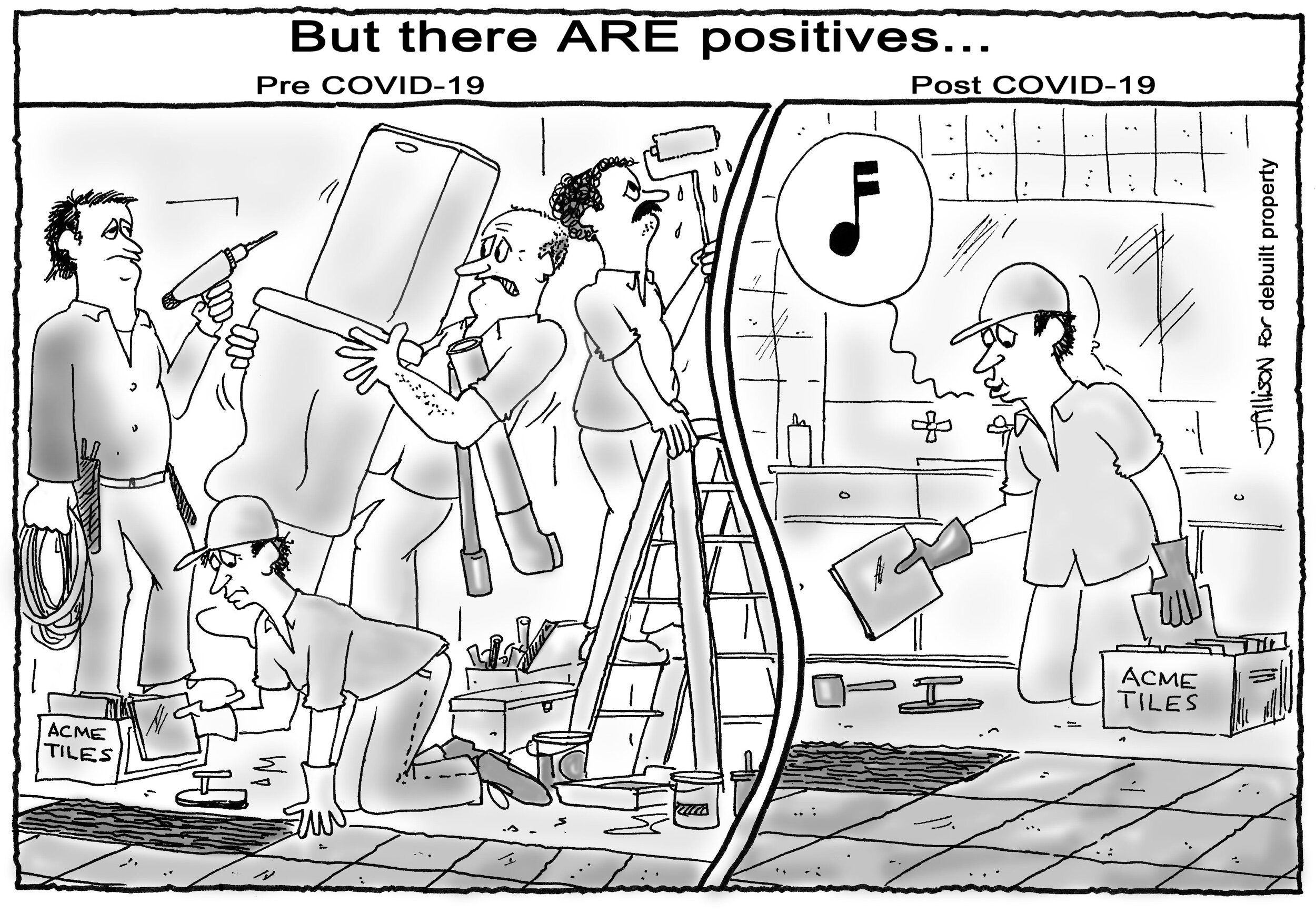Paul is a co-founder and director of Debuilt Property. Paul has extensive experience in construction, project management, development management and asset management.
When Victoria’s Stage 3 Covid-19 restrictions were implemented in March, the construction industry was fortunate. Building sites have typically remained open throughout the pandemic; due partly to good site management and diligence.
Through Debuilt’s role in monitoring construction projects for financiers, I have visited numerous sites and have noticed an overwhelmingly high degree of professionalism exhibited by project managers, site managers and tradesmen in dealing with the challenges of the pandemic.
What is happening on site?
At an industry level, there has been unprecedented collaboration between unions and employers. This has been replicated on site between the builder, subcontractors and their employees. Whilst there have been some accounts of possible transgressions of physical distancing (often reported to authorities by neighbours in lockdown), the consensus is that the protocols are being followed effectively.
Onsite strategies to abide by Covid restrictions include:
Redesigning the site sheds to allow for physical distancing
Continual disinfecting by workers
Additional cleaning rosters and professional cleaners each day adding to the sanitation roster
Signed health declarations prior to entry to site.
The developments that have been most impacted by physical distancing are the high rise projects. On these sites, there is a high demand for workers and materials hoists to provide vertical transport. Typically, a construction hoist would be able to transport 20 workers at a time. However under current regulations this has shrunk to a maximum of three, including the hoist driver. When a site has hundreds of workers this can become extremely unproductive. In addition, workers cannot be allowed to mill around in groups waiting for their turn in the hoist.
Strategies have been put in place to manage demands on hoists, bathrooms and site sheds by staggering commencement, completion and break times. Inclement weather days become particularly problematic as site facilities are not able to accommodate physical distancing if all workers are consigned to the sheds; in which case many will need to be sent home.
The headcount of workers on site are also down for a variety of reasons. In addition to physical distancing, some workers stayed away due to the fear of transmission, (especially amongst migrant groups who may have extended families dealing with Covid 19 in Asia or Europe), an increased commitment to shared home duties, and also due to following government advice to stay away from work at the first sign of illness.
Builders have talked of the need to deal sensitively with their subcontractors and employees. These bosses recognise that their sites accommodate workers from diverse backgrounds who are dealing with the pandemic in their own way.
Productivity has been impacted — many builders feel that their sites are currently operating at around 70% effectiveness. They must juggle the need to maintain their contractual program whilst best managing their site team. The alternatives of working additional hours or increasing the numbers of workers on site each come with their own issues.
Reports differ regarding subcontractors’ willingness to work overtime, or weekends, with some willing to attend but others seeking to limit overtime costs. There is also consideration being given to workers’ mental health; sites recognise the important balance between productive construction and overworking employees.
In some cases there has been the temptation to increase the amount of workers on site, however this can potentially be counterproductive. Apart from the increased difficulty of maintaining compliance with distancing restrictions, additional workers may create a false sense of improvement if the extra resources are not familiar with the implemented work cycles and methodology. Introducing workers from other sites can also increase the concern of virus transmission amongst the current team. In many cases it may be better to maintain a consistent team on site and make plans to improve the sequencing of works.
Positive news
There have, however, been some positive outcomes of the Covid restrictions. There have been no traffic delays for deliveries, particularly for CBD or inner suburban locations, and also an increase in the quality of workmanship for the finishing trades. This is a result of physical distancing requirements limiting multiple trades working on the top of each other in a particular work area.
Earlier this week it was reported in The Age that, in a joint letter to Premier Daniel Andrews, builders and seven construction unions have called for a trial of easing of restrictions on construction sites by taking a risk based approach on a site by site basis. Also, as every Victorian is aware, the State Govt has nominated Monday 11 May as the date which they will review and possibly ease some stage 3 restrictions. Watch this space.
It is certainly my observation that builders are experiencing increased program and financial risk, but are also finding ways to work smarter rather than harder. It has also been great to witness the co-operation between builders, trades and unions and a solution driven attitude on work sites. In general, I believe the construction industry should be commended on how it has managed the pandemic thus far.


